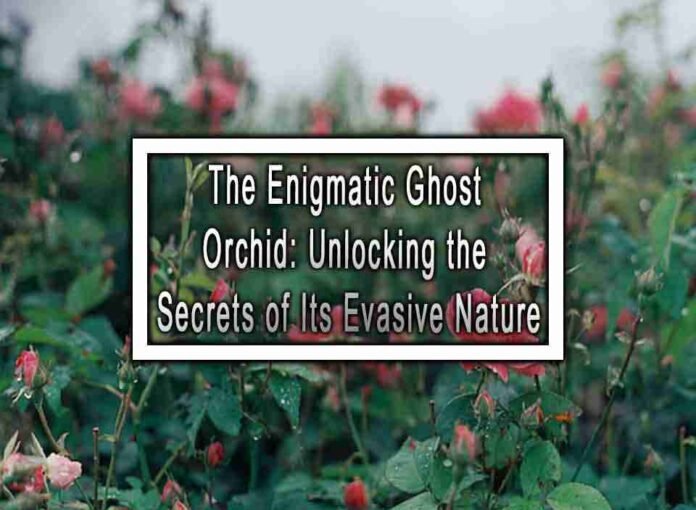The ghost orchid (Dendrophylax lindenii) is indeed an enigmatic and fascinating plant known for its elusive nature. Here are some aspects that contribute to its mysterious reputation and the secrets surrounding this captivating orchid:
1. Rarity
The ghost orchid is considered one of the rarest and most elusive orchids in the world. It is native to Florida in the United States and is primarily found in the swamplands and cypress forests of the region. Its limited distribution contributes to the challenges in studying and locating it in the wild.

2. Epiphytic Nature
Ghost orchids are epiphytic plants, which means they grow on other trees rather than in the soil. They depend on the surrounding environment for nutrients and moisture, utilizing their host trees for support. This unique growth habit makes them difficult to spot as they blend with the tree bark and foliage, camouflaging themselves in their natural habitat.
3. Leafless Appearance
One of the distinct features of the ghost orchid is its leafless appearance. Unlike most orchids, it lacks typical green leaves, relying solely on its roots and intricate aerial roots for absorption of moisture and nutrients. This adaptation adds to its mysterious and ethereal allure.
4. Blooming Period
Ghost orchids have a short blooming period, typically lasting for a few weeks. The flowers emerge from the leafless stem, showcasing delicate white petals with a hint of green and a prominent, intricate labellum. The ephemeral nature of their blooms further adds to their elusive nature, as they can be challenging to predict and witness in their full splendor.
5. Pollination Mechanism
The pollination mechanism of the ghost orchid was once a mystery. The specific insect pollinator responsible for its reproduction remained unknown for a long time. However, research has revealed that the giant sphinx moth (Phalaenopsis spp.) plays a vital role in the pollination of ghost orchids. The moth is attracted to the orchid’s sweet fragrance and long nectar tube, enabling the transfer of pollen from one flower to another.
6. Conservation Concerns
Due to its rarity and habitat requirements, the ghost orchid faces significant conservation concerns. Its dwindling populations are threatened by habitat loss, illegal collection, and climate change. Efforts are underway to protect and conserve this remarkable orchid species, including habitat preservation, monitoring, and raising public awareness.
The ghost orchid’s evasive nature, unique adaptations, and limited distribution have contributed to its allure and intrigue. Scientists and enthusiasts continue to unlock the secrets of this enigmatic orchid, shedding light on its ecological significance and conservation needs. Preserving and studying these elusive plants is crucial to understanding and appreciating their role in the natural world.










